
“I made no mistakes,” Dumas said. “This race is so tough. I am so happy. We have worked six years for this race.”
“Since this week’s tests, we have known that it was possible to break the all-time record. For it to come off, everything had to come together perfectly – from the technology to the driver,” Dumas added. “And the weather had to play ball, too. That everything ran so smoothly is an incredible feeling, and the new record on Pikes Peak is the icing on the cake. I still cannot believe that Volkswagen and my name are behind this incredible time.”
Dumas was competing against conventional internally-combusted cars, one of them being motorcycle action hero Travis Pastrana, who won the Clubsport class in a 2016 Porsche Cayman GT4 in 10:33.9.
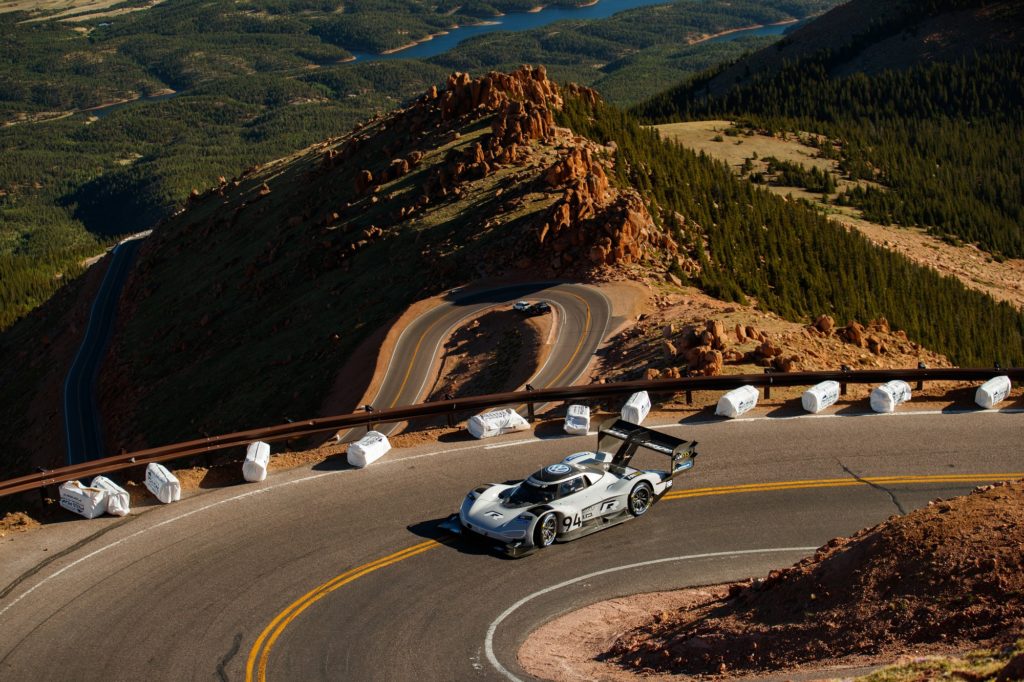
“Every employee involved in the Pikes Peak project has constantly had to push their boundaries and show extreme commitment and dedication,” Volkswagen’s Motorsports Director Sven Smeets said. “Without this, it would not have been possible to repeatedly overcome new challenges and come up with new solutions. It should actually be impossible to achieve all that and especially the all-time record in such a short time, but our team pulled it off thanks to their passion and commitment.
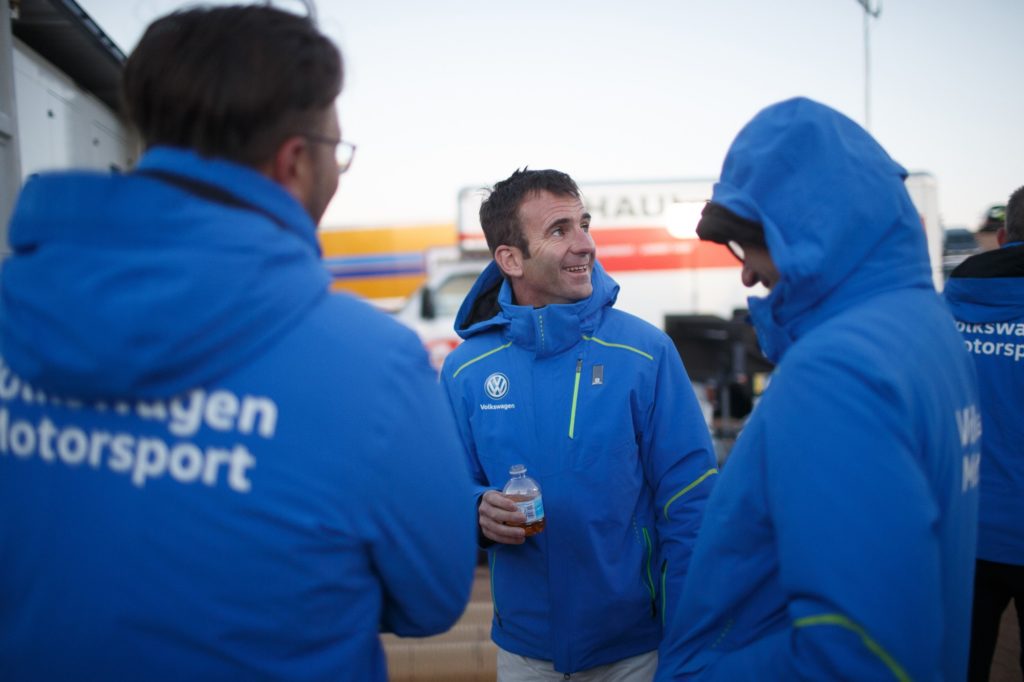
VW’s Pikes Peak car was announced on October 18, 2017 and Dumas crossed the finish line on June 24, 2018, just 250 days later. From prototype to fully-electric drive technology and battery management, Smeets and his team had its hands full in Wolfsburg, at the motorsport headquarters in Hannover, Germany. Most teams spend the month of June in Colorado Springs in intense preparation.
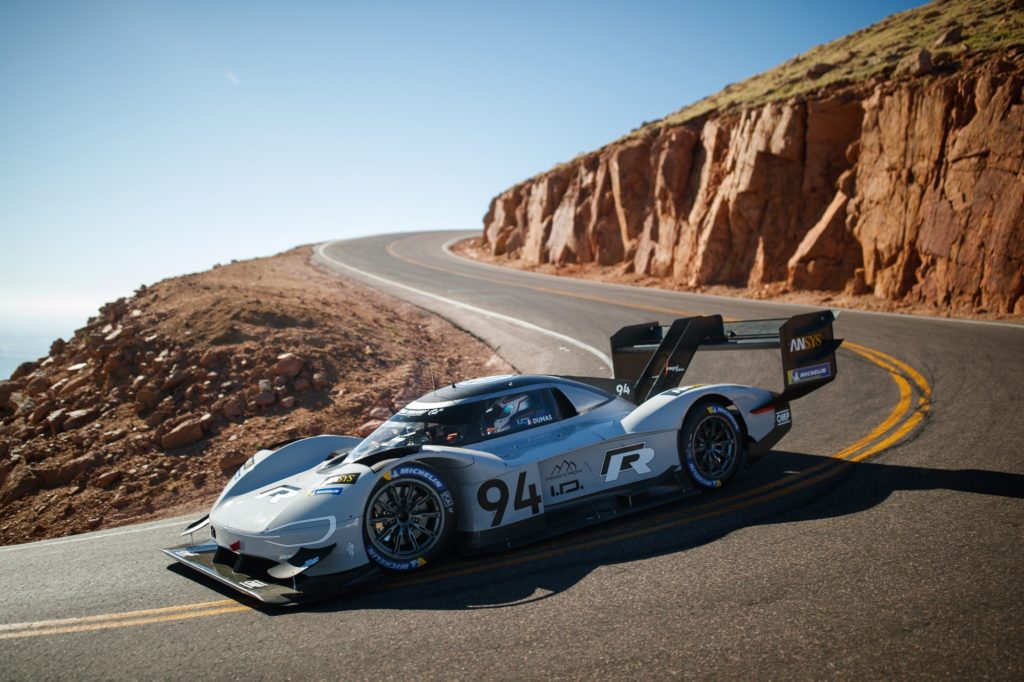
Jeremiah Johnson was the first electric motorcycle, at 40th place overall. He was racing on a 2018 University of Nottingham UoN-PP-02 bike, which took third place at the 2018 Isle of Man Zero TT with rider Daley Mathison two weeks prior.
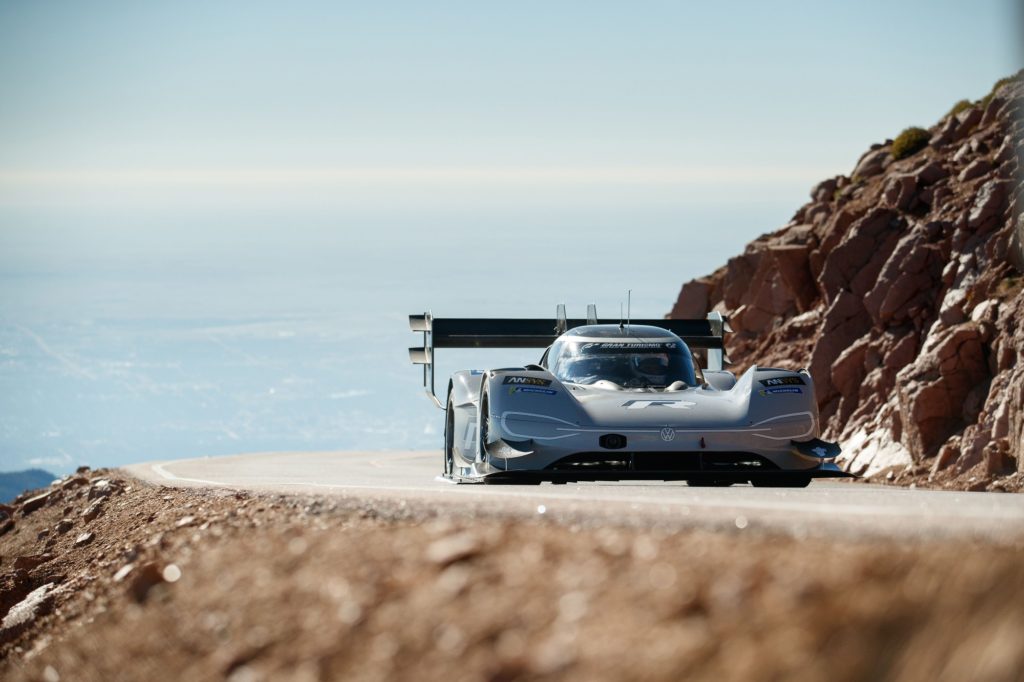
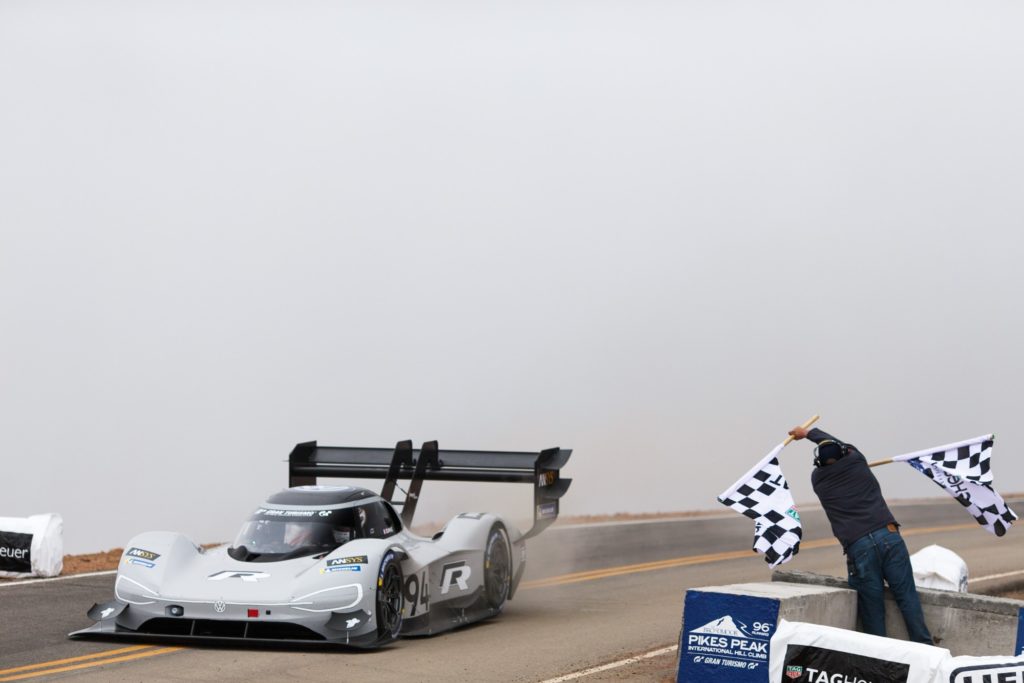
Related Posts
December 13, 2017
The Current: Moto-E World Cup To Race Energica Egos
MotoGP gets a new category in 2019, the…

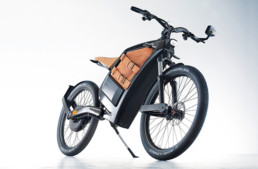
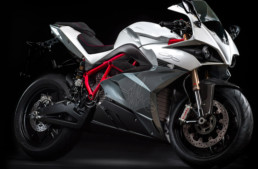
I get that this was a stunt, er demonstration, but it does seem ironic that VW is all so being green given recent history. The question that is begged, the car was charged by diesel generators, albeit green ones burning glycerol. There is always going to be a loss of efficiency when one form of energy is converted to another, we have the chemical energy of glycerol converted to heat, which is converted to mechanical energy, which is used to produce electricity, which is converted to chemical energy again and stored in batteries, which is yet again converted to the mechanical energy used to propel the vehicle. If this is how we are going to save the planet, we are in deep shit.
Remote mountain racing won’t save the planet, but it is fun! You’re absolutely correct about the efficiency question: electric motors are 96% efficient at converting energy to motion, while internal combustion engines are around 60% efficient. Generating electricity for the grid is more efficient/cheaper than shipping fuel around the world, and in most cases is cleaner than petrochemicals, especially if it’s generated by renewable resources like wind. ‘Filling’ an e-Bike or e-Car is about 1/3 the cost of gas, too. That’s a glimmmer of hope, but I concur with your final sentiment regardless.
“Filling’ an e-Bike or e-Car is about 1/3 the cost of gas…”, raises another unanswered question, price is driven by supply and demand, what will be the effect on the price (consumer cost) of electricity when everybody is driving e vehicles? Interesting times ahead!
Well, approx. 40% of the electricity generated in the US already goes to power electric motors of all kinds. The influx of home-generated electricity (solar and wind) occasionally causes issues with the ‘grid’ being overfilled with power in daytime: more electric cars creates more electric storage in their batteries, which helps moderate power fluctuations in the grid. Designers are now using e-Car batteries to power home electricity at night! If a home switches to all LED lighting, this is a minimal draw on their battery.
As you say, interesting times indeed.
one advantage of electric motors vs. internal combustion engines at Pike’s Peak is that the altitude should not be a factor at all- in time electric cars and bikes will be mainstream- i see smart cars all over the place; but i still love the sound of the motor on my bike,and suspect i’m not the only one
If I have to see more volkswagon bullshit I’ll go elsewhere .
But don’t you see the irony? Busted for $Billions for cheating on emissions, but taking records at Pike’s Peak with an e-car. It’s rich.